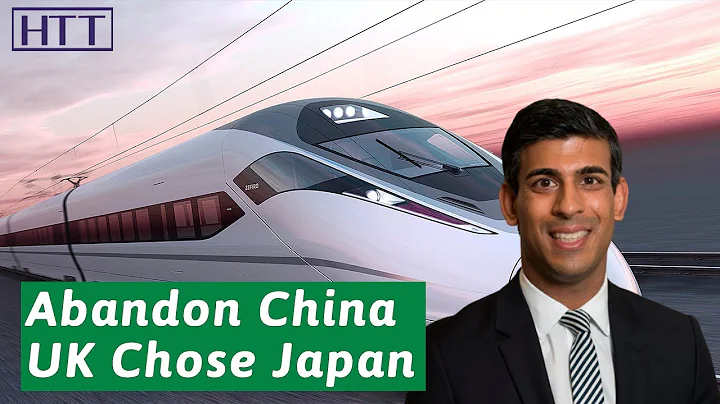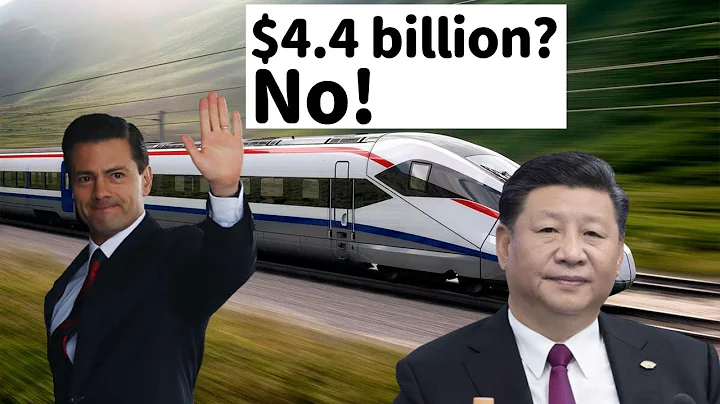Japan spent money on "tens of billions of subsidies" to steal China's large high-speed rail orders, but in the end it suffered a big setback. What's going on? The old rules of , please readers, please use your little hands to make a fortune and give the author a free like and follow, thank you all.
India is the second most populous country in the world and prides itself on being as powerful as China. Seeing that China has made great achievements in high-speed rail in recent years, India feels that it should also have a high-speed rail network.

The total length of railways in India is among the highest in the world, but most of them were built during the British colonial period. They are now in disrepair and accidents occur frequently. India is still resting on its laurels and does not want to make progress and does not develop its own railway technology. This has led to a mess in Indian railway construction. According to official data, 15,000 people die on India's railway system every year.
In recent decades, India's economic development has accelerated, exchanges between various regions and industrial zones have become more frequent and closer, and the construction of a new railway network has become a top priority. China's four-vertical and four-horizontal high-speed rail network drives the country's economic pulse and has set a good example for India.
Therefore, India launched the Diamond Quadrilateral "Four Major Industrial Corridors" plan to connect nine major cities in India with four high-speed rail lines, with a total investment of US$100 billion. The plan is very ambitious, and India does not have its own high-speed rail technology.

What should I do if I have no skills? The third brother can only use his traditional skills and spend money to find others to buy them. They are conducting international tenders to find countries that can help build high-speed rail.
The line being tendered by India at that time was the high-speed rail line from Ahmedabad to Mumbai , which will be referred to as the Meng-Ai Railway in the following. It has a total length of about 506 kilometers and connects India's largest city Mumbai and the capital of Gujarat Ahmedabad, is part of the Delhi-Mumbai Industrial Corridor.
The Delhi-Mumbai Industrial Corridor is 1,483 kilometers long. If it can get the construction project of the Mumbai-Mumbai Railway, it is very likely to open up the domestic high-speed rail construction market in India. After all, India’s “Four Major Industrial Corridors” plan has huge potential markets and benefits. Therefore, after the Indian bidding plan was announced, countries with high-speed rail technology have bid for it.

Among them, four countries, Germany, France, China and Japan, have the advantage. France does have technology, but it lags behind the other three countries. Gallic Rooster didn't think so. He confidently quoted the highest price among the four countries, but was passed directly by India.
German technology is also good, and the quality is guaranteed. But the price they quoted was unacceptable to India. In the end, only China and Japan are competing for the Indian high-speed rail construction project.
China and Japan each have their own advantages. China's high-speed rail supporting technology is mature, rich in infrastructure construction experience, and the cost is lower; Japan's Shinkansen technology is not inferior to ours, and it also has the "acquaintance advantage"; Because this high-speed rail passes through Maharashtra There are many Japanese companies in Maashtra and Gujarat.

In short, China and Japan each have their own advantages, and China has a slight advantage. Why do you say that? Because judging from Japan's subsequent actions, it is not difficult to guess that they were at a disadvantage in the early competition, so Japan was particularly attentive.
In November 2016, Modi visited Japan. The then Prime Minister Shinzo Abe made an exception and changed the original itinerary to take Modi to experience the Japanese Shinkansen. Moreover, a loan plan called a "tens of billions subsidy" by netizens was also proposed.
According to data disclosed by Japan, they estimate that it will cost 1.8 trillion yen (105.2 billion yuan) to build the Meng-Ai Railway, of which 1 trillion yen (58.4 billion yuan) will be provided by Japan as a 50-year low-interest loan with interest As low as 0.1%.

html The interest rate for a 150-year long-term loan is as low as 0.1%. This interest rate may not be able to keep up with the rate of inflation . Simply put, means that Japan helps India build high-speed railways and pays half of the money itself. Relying on spending money at any cost, Japan "snatched" China's big orders, but they soon fell into trouble.
There is an old saying in China called "Three stooges, one is better than Zhuge Liang ", which means that we can help each other to get better results. However, India and Japan dance when they disagree, and bow when they disagree. Not only did they not achieve anything together, they also staged a wonderful joke for people all over the world.
Originally, the Meng-Ai high-speed railway was planned to start construction in 2018, was expected to be completed in four years, and would be put into use in 2022, the 75th anniversary of India's independence. This is what Modi planned, but the plan cannot keep up with the changes.

The construction progress of the Meng-Ai high-speed railway has stopped in the first phase of land acquisition. Building high-speed rail requires occupying land, right? Then land must be expropriated, right? But the Indian people refused to give them land, and Japan's trillion-yen mega project was immediately blocked.
According to Japanese media, 96% of land acquisition in Gujarat has been completed in 2018, with basically no obstacles. However, only 30% of the land acquisition progress in Mahamastra has been completed by the end of 2021. Because there is too much private land in the local area, the land acquisition area for the high-speed rail is 431 hectares, of which 267.55 hectares are private land, accounting for more than 60%.
The farmers refused to transfer their land to death, and the government could not force them to drive them away, so they could only live in embarrassment collectively. Moreover, this is only one of the three major difficulties that Japan has encountered in helping India build high-speed rail.

The other two difficulties are the increase in construction costs and the distrust between Japan and India. Let’s talk about the cost issue first. Due to the progress of land acquisition and the impact of the epidemic, the cost of the Meng-Ai Railway is constantly increasing. ’s estimated cost has increased from the initial 1.8 trillion yen to 3 trillion yen.
The cost increase is mainly reflected in two aspects. One is labor cost. After all, the longer the construction period, the more workers will be paid; the other is line modification costs. India has requested that the elevated railway design be revised so that less land can be acquired and collisions between high-speed railways and livestock such as cattle and sheep can be avoided.

However, the cost of modifying the railway design will have to be borne by Japan. This is one of the reasons why Japan and India do not trust each other. Because in order to reduce the cost of modifying the railway design, Japan can only hand over the civil engineering projects originally responsible for Japanese companies to Indian companies.
Now, India is very angry at the sight of it. Since Indian companies can be responsible for civil engineering, why not let India be responsible in the first place? India feels that Japan must be up to something.
Japan is also frustrated because of the slow progress of land acquisition in India. In an interview with the media, secretly accused India of not doing enough on the issue of land acquisition and only bragging.

It can be said that the high-speed rail project built by Japan for India has not gone well. In the past few years, only about 10 kilometers have been built. It is still a demonstration and has no practical use. Now it has become a check-in place for Indian Internet celebrities.
Land expropriation has not been completed, costs have increased, and India's high-speed rail lines have been delayed again and again. It was originally planned to be constructed in 2018 and completed in 2022, but later it was changed to strive to start construction in 2022. Now India has changed the target period for opening from 2023 to 2028.
However, it is said that people in India do not believe that this high-speed rail line will be opened in 2028. looked at Japan again and picked up a "hot potato". At this time, they wanted to withdraw, but they could not find other countries willing to take over . Because after all the hard work, countries that are capable of building high-speed rail all know that India’s high-speed rail is a bottomless “quagmire.”

Now India is also on the right track. Japan neither dares nor wants to give up halfway, saying: This is what Japan wants to do on our Indian soil, and whoever wants it will pay the bill. In the end, only Japan suffered the loss and misfortune
Japan is also very helpless and entangled. If it continues, the cost of this 3 trillion Indian high-speed rail project will definitely continue to increase; if it is not done, the worst result may be that the project will directly Bad ending. So do you think it will end badly?












![[Complete Quest] Lost in the Sands | All Puzzles Solved | Genshin Impact - DayDayNews](https://i.ytimg.com/vi/ons0pQscgXQ/hq720.jpg?sqp=-oaymwEcCNAFEJQDSFXyq4qpAw4IARUAAIhCGAFwAcABBg==&rs=AOn4CLDQ9MtRVtIKftuC5l42c7sVxjNI7Q)








